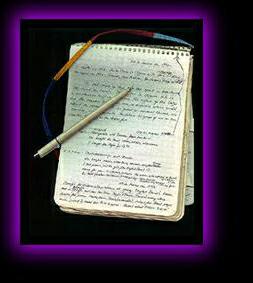|
Excerpts
Panajachel, Guatemala
Entry: All I've been doing is hobbling around Panajachel waiting for my toe to heal. I guess I was fortunate that night I fell in Livingston. Four or five times daily I change the gauze and dressing, always scrutinizing the progress of recovery and wishing it would speed up. It is doing well and I am feeling fine. I now have met many of the expats who own businesses here or simply live here on their money. Have been to garden parties where 50 year old flower children wore bougainvillea in their hair and danced like people did at Woodstock in the '60s. I have spoken with owners of businesses who talk about the slow tourist season and the pinch they're feeling. Have laughed away evenings with a painter (her name is Julie), a landscaper (she's from Canada and her name is Juana) and many others. Have also met some Guatemaltecos who are making their way in this modern Western wave with the blood in their veins reaching thousands of years into the past. Yesterday I went on a boat across the lake to San Pedro La Laguna and Santiago Atitlán. It was a day on the water visiting the other side of the tourist hustle in Pana. San Pedro is a poor, dusty town at the foot of a volcano with the same name. Off the few main streets of this town there are walkways that zigzag among dirt-floored houses and open areas where trash covers the ground beneath old coffee plants and trees. These narrow walkways are, in some places, packed earth and, in others, much-worn stones where they climb the hills. The children are beautiful and dirty and the older ones worn beyond their years. There are 12 and 13 year old mothers suckling their babies on the stoops of tin-roofed stucco houses along the steep streets. And always there is Lago de Atitlán - a beautiful, flat, tiny sea couched in the arms of the volcanoes and craggy mountains. The ever-changing face of the sky throws its passing thoughts upon the surface of the water which mutates and transmogrifies with the movement of the sun and the clouds. It is a continuing dance to wonder at. As an outsider, I peer between dirty stucco walls and beyond the rusted corrugated tin roofs to a slice of azul water, a section of patchwork farm high up on the side of the volcano. The poor ones in town grind maize while their very young children run down to the lake's shore with empty gasoline cans and plastic jugs for the 10th or 20th time in the day to bring back water that is really only good for washing. On the edge of the water cayucos made from rough, hand-hewn planks sit to dry on the gray-brown earth. These small rectangular canoes with pointed bows are lined with moss to absorb the water that seeps through their cracks when they are out on the lago. Looking at them it comes to mind that it is a wonder the cayucos float at all. But, in fact, these toothpicks on the water help to sustain the lives of those beautiful and dirty children who suckle at the breasts of young, very young mothers.
|
